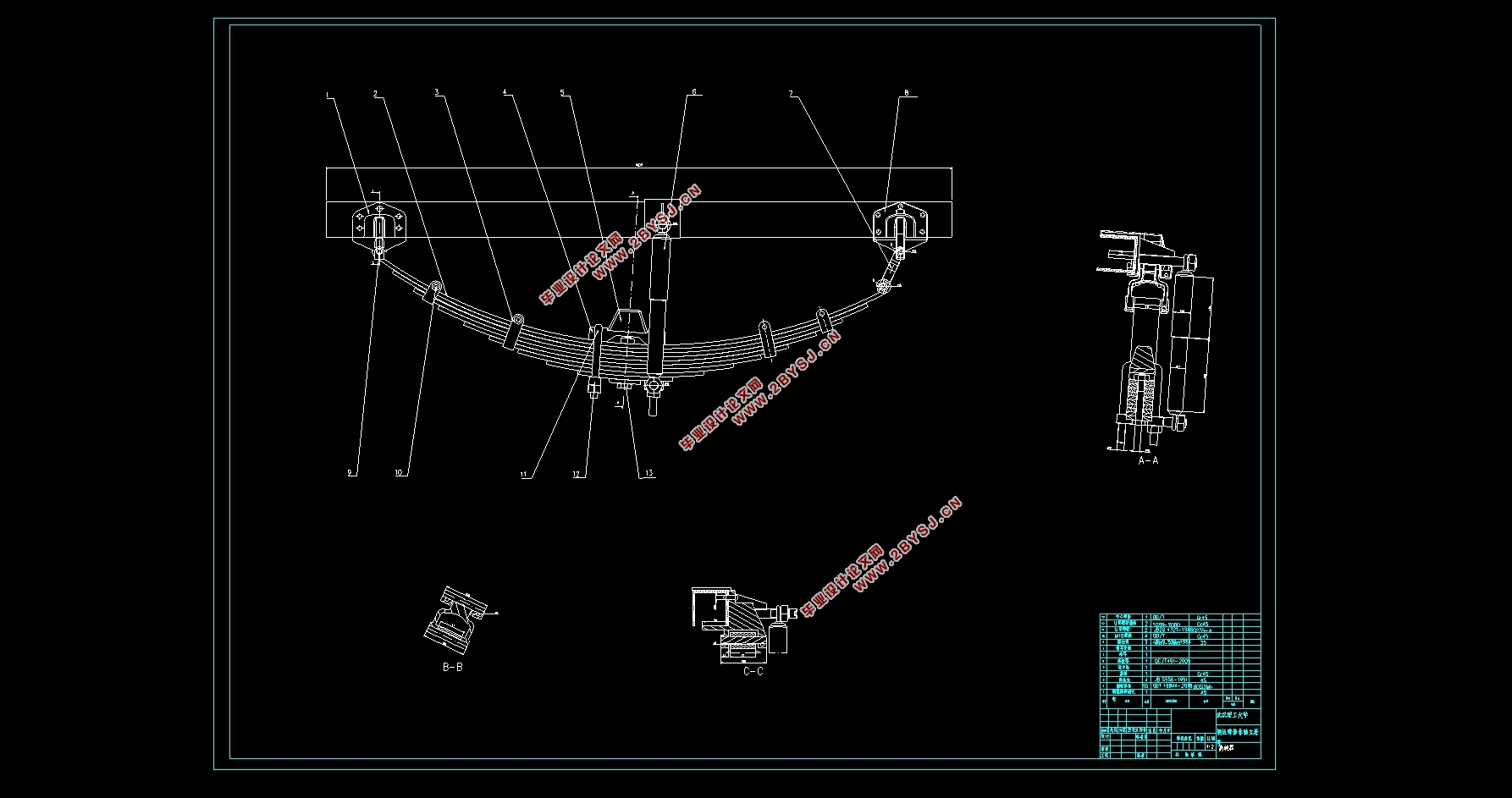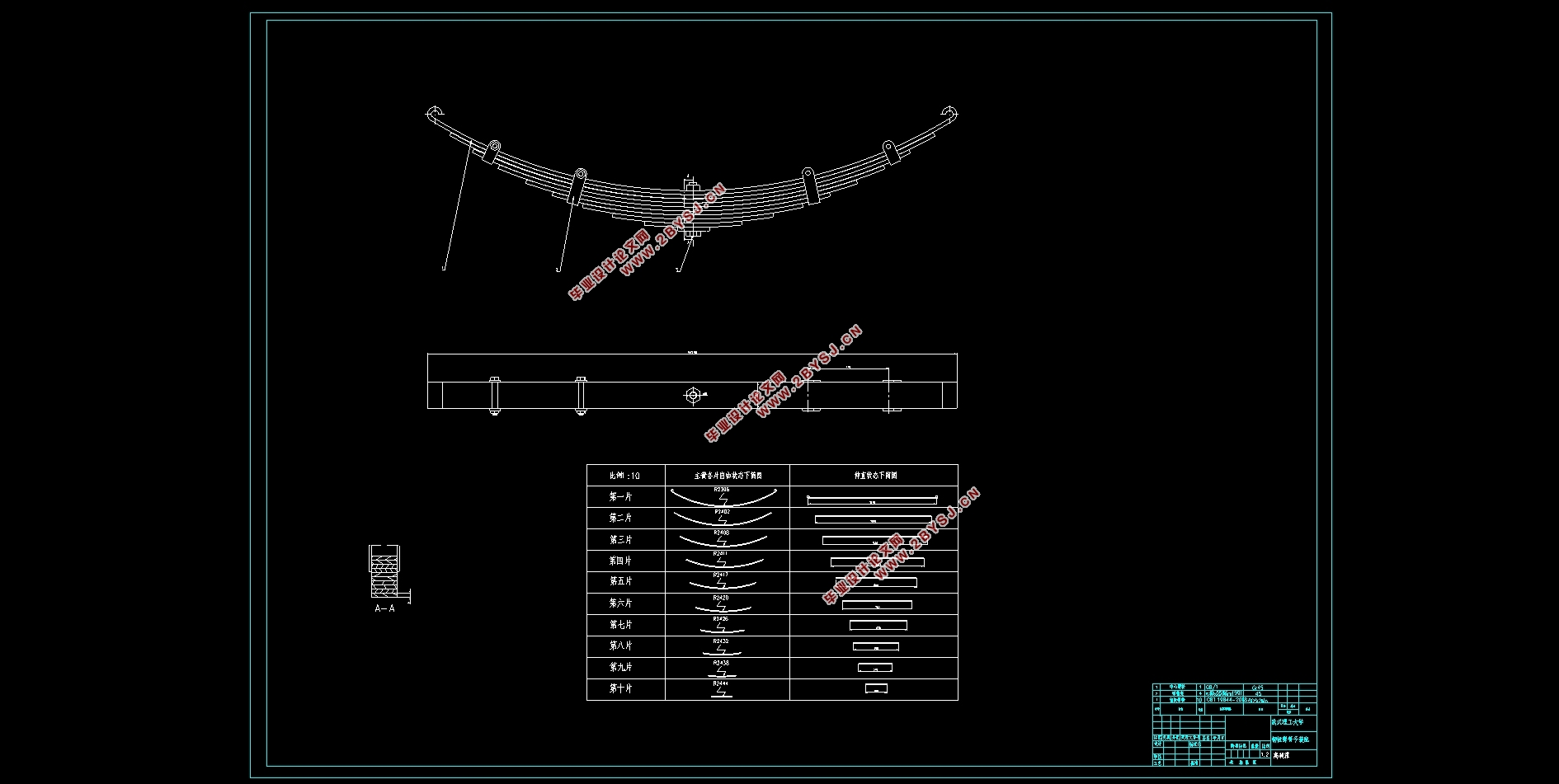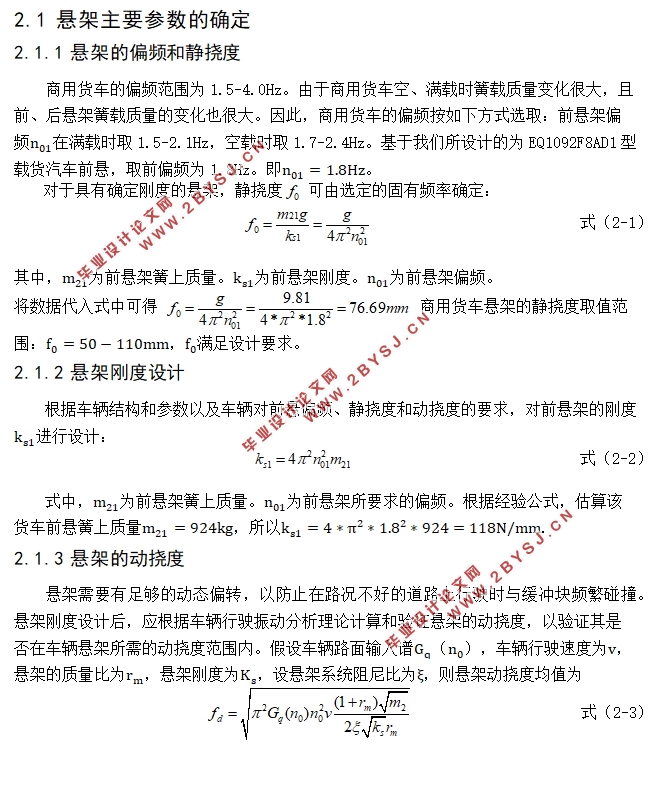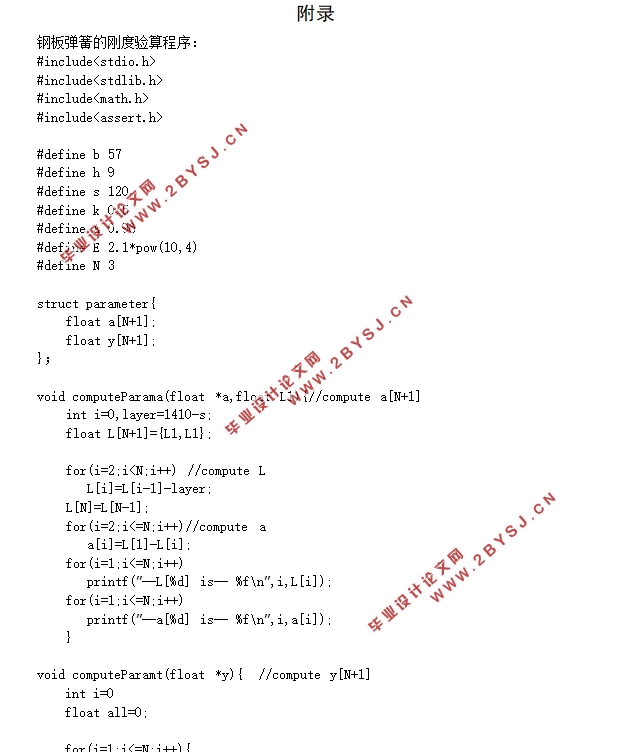EQ1092F8AD1型长头柴油载货汽车前悬设计(含CAD图,答辩记录)
无需注册登录,支付后按照提示操作即可获取该资料.
EQ1092F8AD1型长头柴油载货汽车前悬设计(含CAD图,答辩记录)(任务书,开题报告,外文翻译,文献摘要,论文说明书11000字,CAD图4张,答辩记录,答辩PPT)
摘要
本文应用悬架基本知识,结合“EQ1092F8AD1”型中型载货汽车参数,对中型载货汽车前悬结构进行设计。在此基础上,应用Catia/CAD等软件对其进行模型的建立与优化。首先我们选择钢板弹簧为弹性元件,接着对其布置行驶、主要参数进行设计,最后进行参数的验算与校核,使其能够满足汽车行驶平顺性与操纵稳定性的要求。文中还对悬架的导向机构进行了研究,并绘制了对称钢板弹簧推杆角的简图。最后,对悬架减振器进行了主要参数的设计。在总体布置设计完成后,利用catia工具进行对模型进行优化设计,并绘制设计总装配图以及零部件图。
本设计的目的和意义在于对中型柴油载货汽车前悬进行设计和仿真,并且提出改进意见。
关键词:EQ1092F8AD1中型货车 非独立悬架设计 钢板弹簧
Absract
This paper applies the basic knowledge of suspension, combined with the "EQ1092F8AD1" medium-duty truck parameters, to design the front suspension structure of medium-duty trucks. On this basis, the model is established and optimized by using software such as Catia/CAD. First, we choose the leaf spring as the elastic component, then design the driving and main parameters, and finally check and check the parameters to meet the requirements of vehicle comfort of riding and stability of handling. The guiding mechanism of the suspension is also studied in this paper, and a simplified diagram of the yoke leaf spring pusher angle is drawn. Finally, the basic parameters of the suspension damper were designed. After the overall layout design is completed, the catia tool is used to optimize the model design, and the design assembly drawing and component drawing are drawn.
The purpose and significance of this design is to design and simulate the front suspension of medium-duty diesel trucks and propose improvements.
Keywords: EQ1092F8AD1 medium-sized truck;non-independent suspension design; leaf spring
我们首先要确定以下条件:满载静止时汽车前轴负荷 。簧下部分荷重 。悬架的静挠度 和动挠度 。由以上条件计算出板簧的载荷 。以及汽车的轴距等。
汽车静止满载前悬架负荷G_1=2410*9.81=23642.1N
簧下部分载荷为G_u1=92.4*9.81=906.4N
单个钢板弹簧满载载荷
悬架的静挠度f_0=76.69mm
悬架的动挠度f_d=60.91mm
轴距L=4700mm





目录
摘要 - Ⅰ -
Absract - Ⅱ -
第1章 概论 - 3 -
1.1 悬架的功用和要求 - 3 -
1.2 悬架结构的分析 - 3 -
1.2.1 弹性元件 - 3 -
1.2.2 减振器 - 4 -
1.2.3 导向机构 - 4 -
1.2.4 缓冲块 - 5 -
第2章 悬架设计 - 6 -
2.1 悬架主要参数的确定 - 6 -
2.1.1 悬架的偏频和静挠度 - 6 -
2.1.2 悬架刚度设计 - 6 -
2.1.3 悬架的动挠度 - 6 -
2.1.4 悬架的弹性特性 - 7 -
2.1.5 悬架对汽车操纵稳定性的影响 - 8 -
2.2 弹性元件的计算 - 8 -
2.2.1 钢板弹簧的布置形式 - 8 -
2.2.2 钢板弹簧主要尺寸参数的设计 - 8 -
2.2.3 钢板弹簧的验算 - 12 -
2.3 板簧悬架的导向机构 - 15 -
2.3.1 轨迹中心和轨迹半径 - 15 -
2.3.2 推杆角φ - 16 -
2.4减震器的设计 - 16 -
2.4.1 减振器主要参数的确定 - 17 -
2.4.2 减振器主要尺寸参数 - 19 -
2-5 钢板弹簧支架的设计 - 19 -
第3章 模型建立 - 21 -
3.1 板簧模型的建立 - 21 -
3.2 减振器模型的建立 - 22 -
3.3 其他构件模型的建立 - 22 -
3.3.1 连接件 - 22 -
3.3.2 盖板及缓冲块 - 23 -
3.3.3 吊耳 - 24 -
3.3.4 减振器支架 - 24 -
3.4 零件的装配 - 25 -
结论 - 27 -
致谢 - 28 -
参考文献 - 29 -
附录 - 31 -
